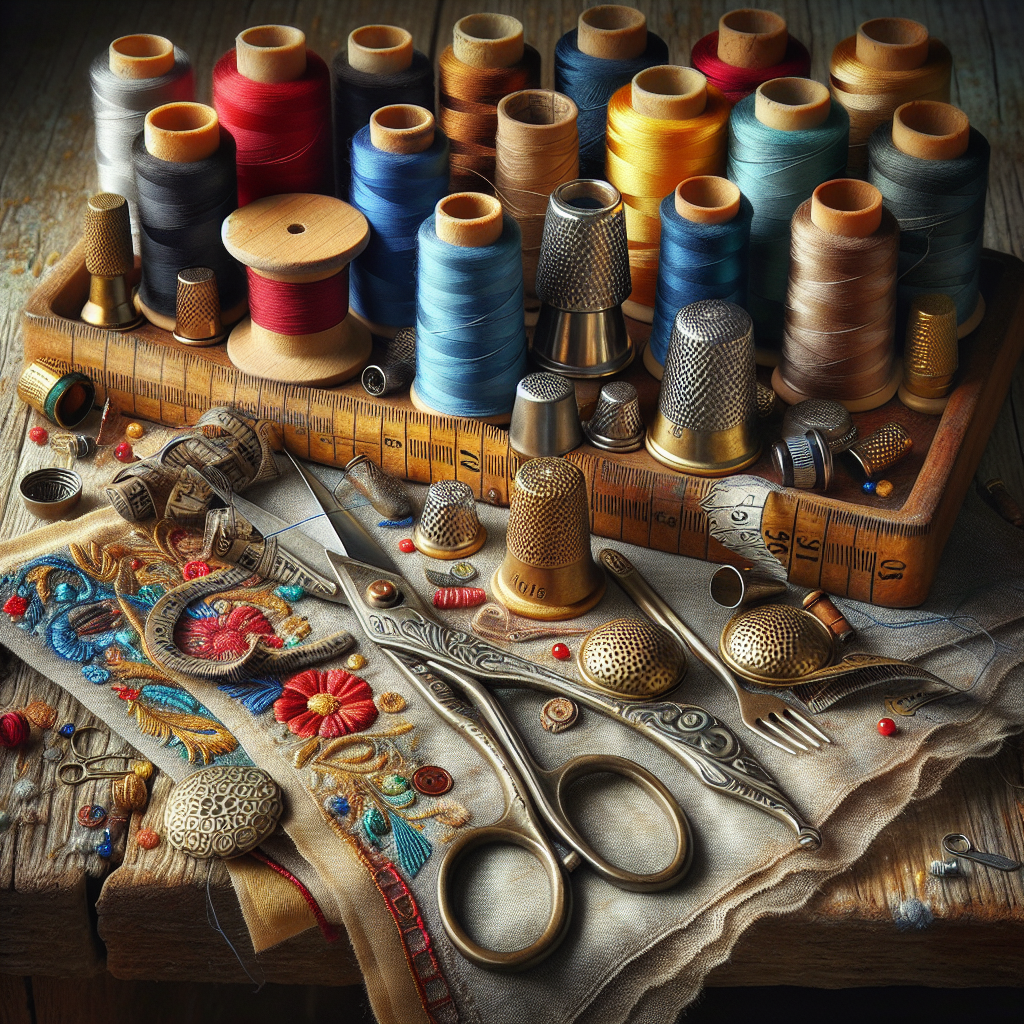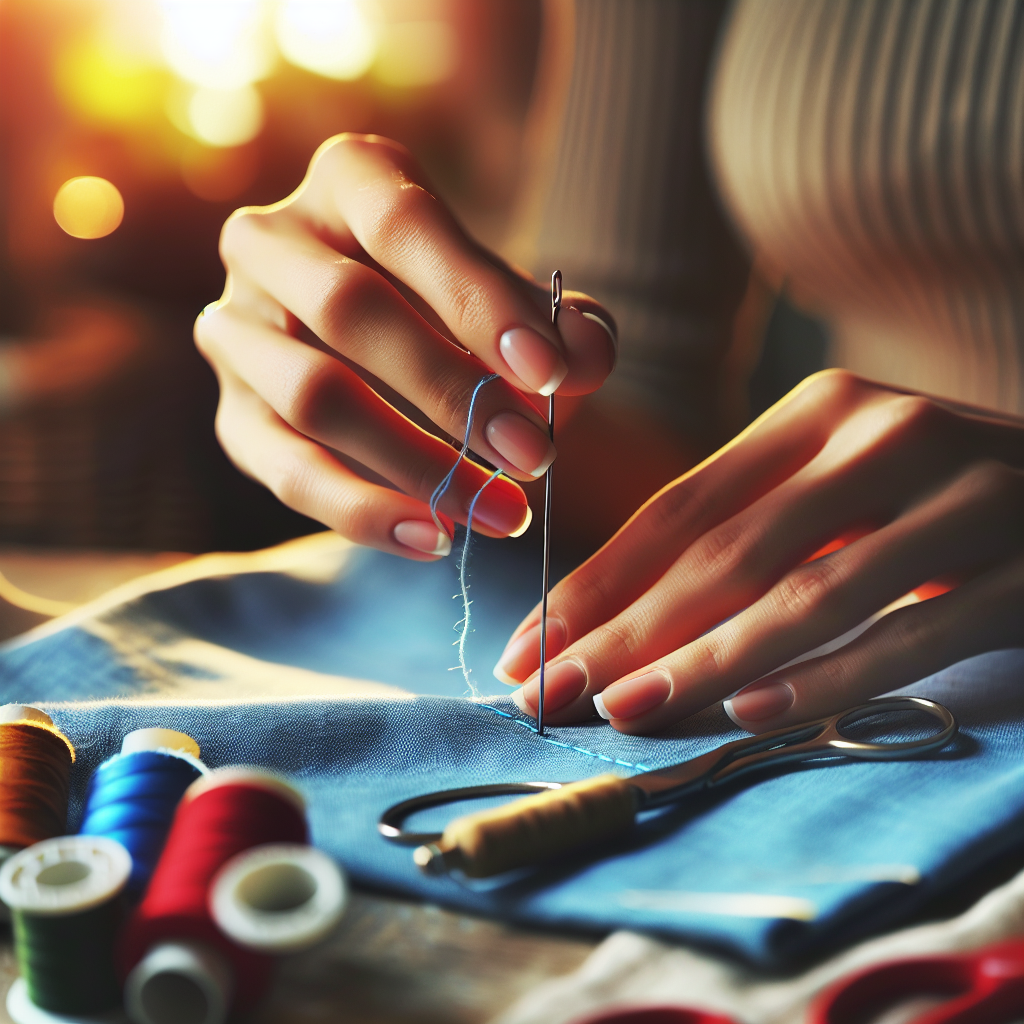Hand sewing is an essential skill that offers numerous benefits for both beginners and experienced crafters alike. By mastering hand sewing techniques, you can explore a world of creativity that machines cannot replicate. From mending garments to creating intricate designs, hand sewing provides a personal touch that enhances the overall quality of your projects.
One of the key advantages of hand sewing is the level of control it affords you. Unlike machine sewing, where fabric can sometimes slip or get caught, hand sewing allows for precision in every stitch. This makes it ideal for delicate fabrics or detailed work, such as embroidery or patchwork. Additionally, hand sewing can be done anywhere, making it a convenient option for on-the-go crafters.
Moreover, hand sewing can be a meditative process. Many enthusiasts find that the rhythm of stitching has a calming effect, allowing them to unwind while creating something beautiful. Engaging in hand sewing also fosters a deeper connection to your projects, as each stitch is a reflection of your personal effort and creativity.
For those looking to delve deeper into the world of hand sewing, GrayNeedle.com is the perfect resource. Visit our website to learn more and get started today! Click here.
Essential Tools for Successful Hand Sewing Projects
Equipping yourself with the right tools is crucial for achieving success in your hand sewing projects. Below are some essential tools that every hand sewer should have in their toolkit:
- Needles: Choose between various sizes and types, such as universal, embroidery, or quilting needles, depending on your fabric choice.
- Threads: Opt for high-quality threads that match your fabric. Cotton, polyester, and silk threads are popular choices, each offering different benefits.
- Fabric Scissors: Invest in a good pair of fabric scissors to ensure clean cuts without fraying edges. Always keep them sharp for the best results.
- Pins and Clips: Use straight pins or fabric clips to hold pieces together while you sew. This will help maintain alignment and prevent shifting.
- Measuring Tools: A measuring tape, ruler, and fabric markers are essential for accurate measurements and markings on your fabric.
- Thimble: Protect your fingers while pushing needles through thick fabric by using a thimble. It enhances comfort and prevents injury.
- Seam Ripper: Mistakes happen; a seam ripper is a must-have for quickly removing stitches without damaging the fabric.
Having these tools on hand will not only make your sewing experience more enjoyable but will also improve the quality of your finished projects. As you gather your supplies, remember that investing in good tools pays off in the long run.
Important Hand Sewing Tips for Beginners to Follow

Starting your journey in hand sewing can be both exciting and daunting. However, by following a few important tips, beginners can enhance their skills and build confidence in their craft:
- Start with Simple Projects: Begin with small, manageable projects like pillows or simple tote bags. This will help you practice basic techniques without feeling overwhelmed.
- Practice Consistency: Aim for even stitches and consistent tension. This ensures that your seams are strong and your projects look professional.
- Use Quality Materials: Choose good-quality fabrics and threads to avoid frustration. Low-quality materials can lead to problems like fraying, breaking, or uneven stitching.
- Learn Stitching Techniques: Familiarize yourself with basic hand stitches like the running stitch, backstitch, and slip stitch. Mastering these techniques will give you a solid foundation for more complex projects.
- Take Your Time: Don’t rush the process. Take your time to enjoy each step, and remember that practice makes perfect. Allow yourself to make mistakes and learn from them.
- Stay Organized: Keep your sewing area tidy and organized. Having a clean space can help you focus better and find your tools easily when you need them.
By implementing these tips, beginners can develop their hand sewing skills effectively, leading to greater satisfaction and creativity in their projects.
Advanced Hand Sewing Tricks to Enhance Your Skills

Once you’ve mastered the basics of hand sewing, it’s time to elevate your skills with some advanced tricks. These techniques not only improve your craftsmanship but also expand your creative possibilities:
- Experiment with Decorative Stitches: Incorporate decorative stitches such as *sashiko* or *fancy embroidery* to add unique flair to your projects. These stitches can transform a simple piece into a work of art.
- Learn to Bind Edges: Edge binding is a technique that adds a polished finish to your projects. This skill is particularly useful for quilts and bags, providing durability and a professional look.
- Utilize Templates and Patterns: Using templates can help you achieve precise shapes and sizes. Look for patterns that challenge your skills, which can lead to a better understanding of fabric manipulation.
- Master the Art of Appliqué: Appliqué involves sewing one piece of fabric onto another, allowing for creative designs and layering. This technique can be used to enhance clothing, quilts, and home décor.
- Incorporate Beading and Embellishments: Adding beads, sequins, or other embellishments can elevate the aesthetic of your projects. This technique requires patience but can result in stunning effects.
- Practice Tailoring Techniques: Tailoring methods such as hand-stitched hems and darts can improve the fit and finish of your garments. Learning these techniques will enable you to create custom-fitted clothing.
Implementing these advanced hand sewing tricks will not only enhance your skills but also encourage you to explore new creative avenues in your sewing projects.
Creative Applications of Hand Sewing in Projects

Hand sewing is not just a means to an end; it opens up a world of creative possibilities across various projects. Whether you’re a seasoned pro or a beginner, understanding the diverse applications of hand sewing can inspire you to infuse your personal touch into your creations. Here are some innovative ways to incorporate hand sewing into your projects:
- Personalized Accessories: Create unique handbags, wallets, or pouches by hand sewing. Using different fabrics, colors, and embellishments allows you to express your style and make one-of-a-kind items.
- Custom Home Décor: Hand sewing can breathe new life into your home. Consider making *cushion covers*, *table runners*, or *wall hangings*. The tactile nature of hand-sewn items adds warmth and character to your living space.
- Quilting Projects: Quilting is a beautiful way to showcase your hand sewing skills. From traditional patchwork to intricate designs, hand sewing allows you to control every stitch, ensuring your quilt reflects your personality.
- Kids’ Clothing and Toys: Hand sewing is an excellent option for crafting soft toys or clothing for children. You can create safe and unique items with bright colors and fun shapes, making them ideal for gifts or personal use.
- Fashion Enhancements: Add unique details to your garments with hand sewing techniques. Consider embellishing jackets with patches, or using decorative stitches to enhance a hemline, giving your clothing a trendy edge.
- Fabric Art and Mixed Media: Combine hand sewing with other mediums such as painting or printing to create fabric art pieces. This approach allows you to explore textures and layers, resulting in stunning visual art.
By embracing these creative applications of hand sewing, you can embark on projects that not only showcase your skills but also reflect your individuality and artistic vision.
Community Resources for Hand Sewing Enthusiasts

Being part of a community can significantly enhance your experience as a hand sewing enthusiast. Engaging with others who share your passion allows you to exchange ideas, gain insights, and find inspiration for your next project. Here are some valuable resources that can connect you to a vibrant community:
- Online Forums: Websites and platforms like *GrayNeedle.com* offer forums where you can ask questions, share your projects, and receive feedback from fellow sewists. These communities are often filled with experienced members eager to help beginners and share tips.
- Social Media Groups: Platforms like Facebook and Instagram host numerous groups dedicated to hand sewing. Joining these groups allows you to participate in challenges, view tutorials, and showcase your work to a supportive audience.
- Local Sewing Clubs: Many communities have local sewing clubs or guilds where members meet regularly to share techniques and work on projects. These gatherings provide a fantastic opportunity to learn from others and make new friends.
- Workshops and Classes: Look for workshops or classes at local fabric stores or community centers. These events not only teach you new skills but also introduce you to fellow enthusiasts who might become lifelong friends.
- Online Tutorials and Blogs: Many sewing bloggers and YouTubers offer free tutorials that can guide you through various techniques. Engaging with these creators can lead to fruitful discussions and connections with other viewers.
By tapping into these community resources, you can enrich your hand sewing journey and find the support you need as you develop your skills. Visit our website to learn more and get started today! Click here.

